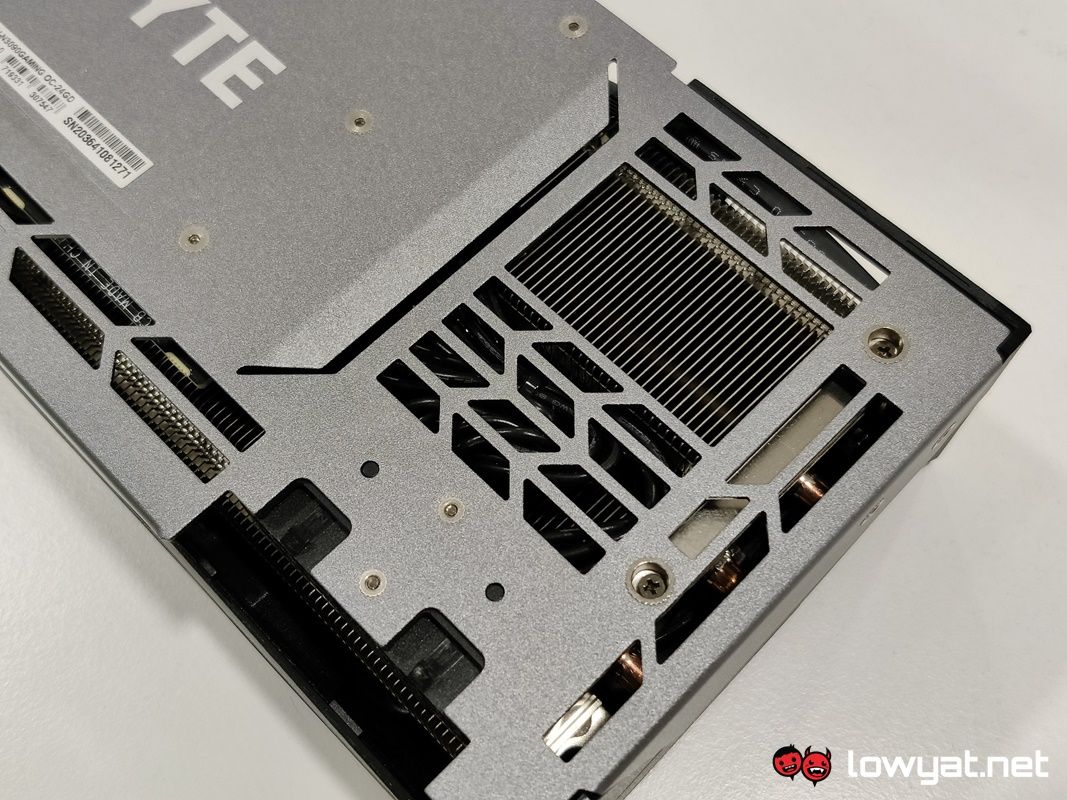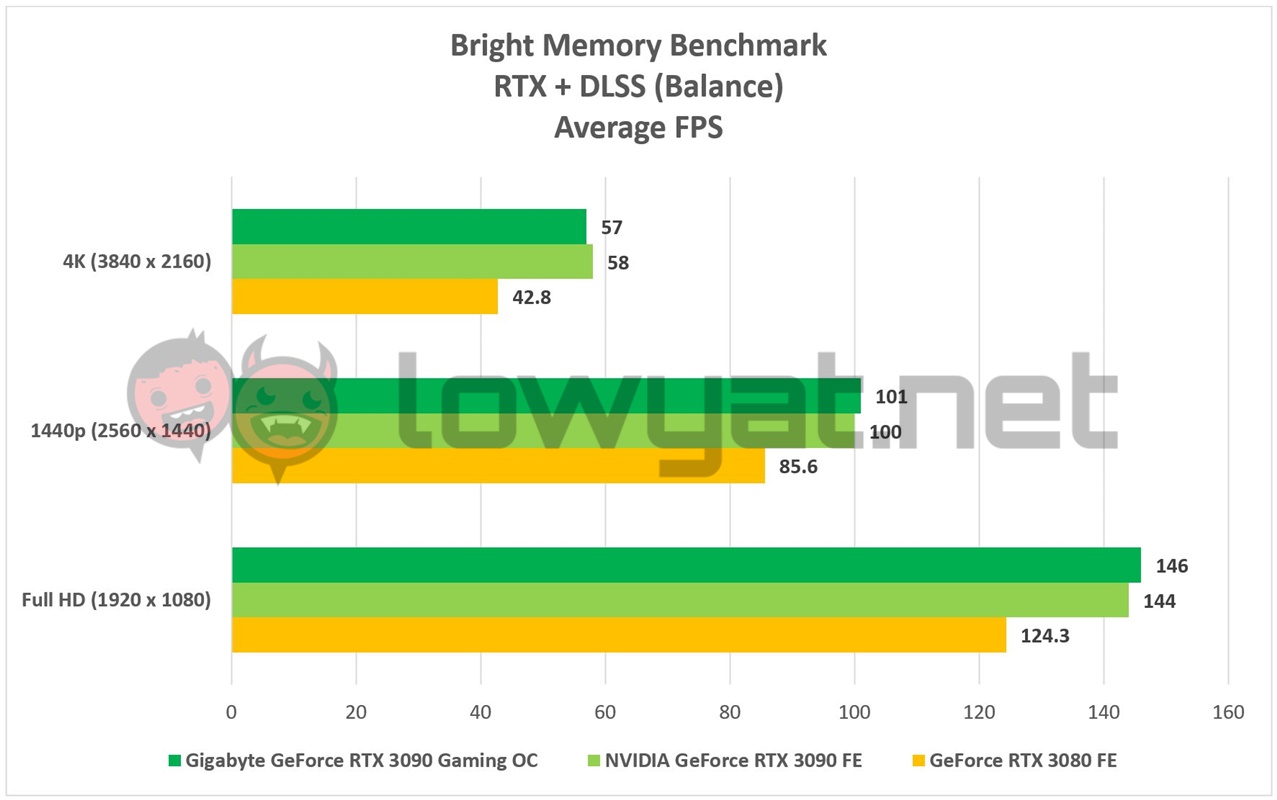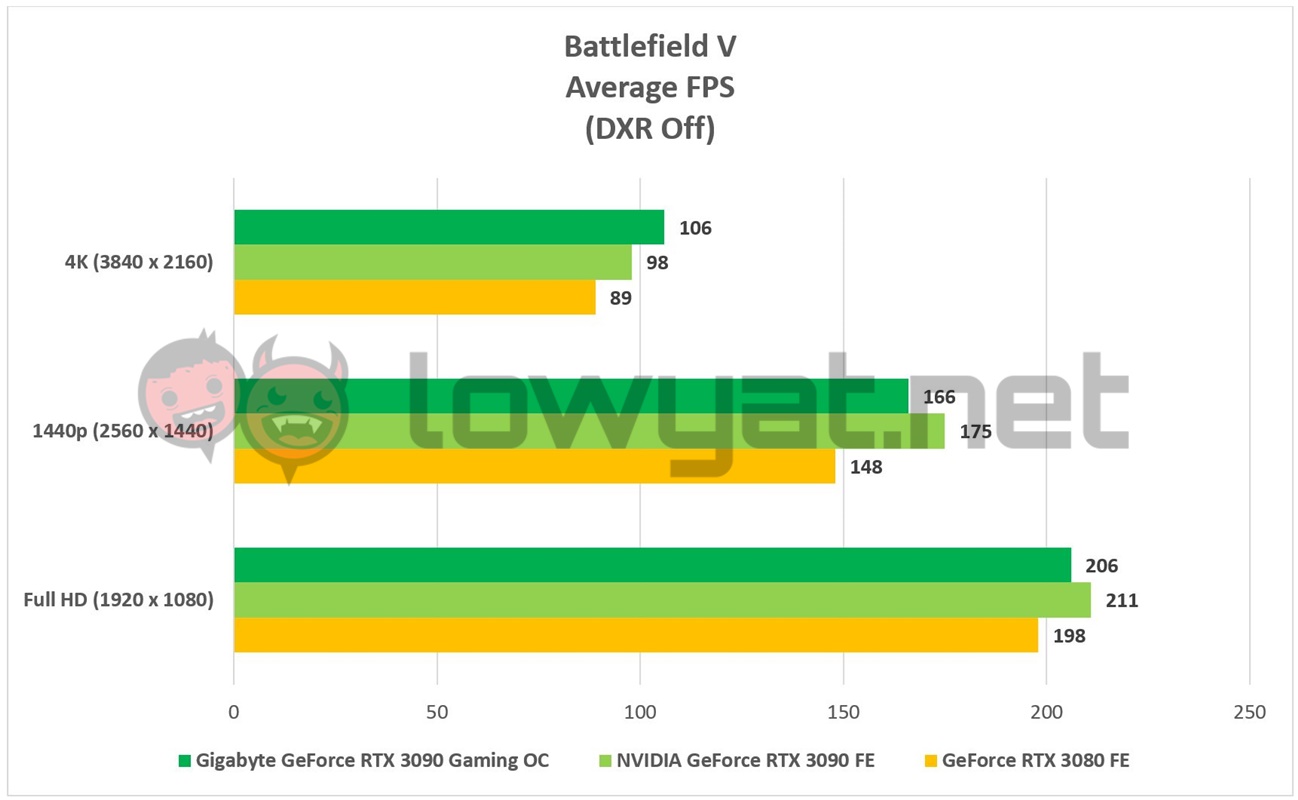When it comes to PC components, you could do worse than getting yourself a component made by Gigabyte. As a titan of industry, the brand is prominently known among enthusiasts for its habit of over-engineering its products, and sometimes at the expense of aesthetics.
The company’s GeForce RTX 3090 Gaming OC, then, is no exception to the rule, but as the old saying goes: it’s what is on the inside that counts.
Specification
Design

I rarely gripe about a card’s aesthetics, but in the case of the RTX 3090 Gaming OC, I feel obliged to address certain design choices Gigabyte has made with it. Let’s be clear: I don’t believe there is anything wrong with the asymmetrical design of the card’s cooler shroud and heatsink, but I honestly believe that Gigabyte could have taken a leaf out of the design book of its more premium AORUS lineup, even just a little bit.
On a personal level, I don’t like that sharp, angular cutout of at the back of the RTX 3090 Gaming OC, along with the sudden rise in the heatsink’s height. To me, it stands out whether I’m starting point-blank at its fans or sideways when installed into a system.

That said, the massive heatsink does serve a purpose. Gigabyte’s Windforce cooling technology is already tried and tested and in this case, the triple-fan design performs as one would expect. On a side note, there is an RGB strip built into the edge of the cooler shroud; its application is far from excessive, an aesthetic point I personally appreciate, especially since I don’t want my rig to light up like a rave party at a popular night club.
Still, on the subject of the heatsink, it’s also relatively longer than the actual PCB. To be fair, it’s a trend almost all AiB partners have adopted and having a plus-sized heatsink stuck attached to the Ampere GPU does a significant job at heat dissipation.


In terms of output ports, the RTX 3090 Gaming OC has all the standard ports as the RTX 3090, plus an additional HDMI 2.1 port, presumably for double the 8K resolution output. Oh, and as it is with all third-party RTX 30 series cards, it is still powered via the current 8-pin PCIe power port – specifically, two – and not via NVIDIA’s proprietary 12-pin PCIe port.

Lastly, there’s the price of the RTX 3090 Gaming OC: It costs RM7899.
Testbench
In this review, I will be using the AMD Ryzen 9 5950X and running it in its default state, rather than overclocking it. In hindsight, I expect the RTX 3090 Gaming OC to perform similarly, if not slightly better than the RTX 3090 FE, but that is primarily through the slight bump in its boost clock. Courtesy of Gigabyte.
Benchmarks

Despite the slightly higher boost clock, the RTX 3090 Gaming OC’s performance in UL’s 3DMark was a bit of a mixed bag. It beats its FE cousin in the Fire Strike and Fire Strike Extreme test, as well as the Time Spy Extreme segment, but seems to lag behind (just slightly) in the other test. Likewise, it’s a similar story with the Unigine Superposition benchmark.
The Boundary and Bright Memory benchmarks results are also something of a surprise. I had expected its performance to be on par with the RTX 3090 FE across the board, especially for the former and its 4K resolution test. On a fairer note, it’s not a huge gap and the RTX 3090 Gaming OC is clearly still the Ampere-based powerhouse NVIDIA designed it to be.
As for the gaming segment of the card, our list of DXR-capable titles gave the RTX 3090 Gaming OC a run for its money. While it still managed to hold its own without DLSS in games like Battlefield V (BFV) and Shadow of the Tomb Raider at 4K, playing Control without the super-sampling feature makes for a clearly a less-than-satisfying experience.
For non-DXR titles, the card is obviously more than capable of maintaining better than average framerates. Case in point, the RTX 3090 Gaming OC’s overall performance in titles like Deus Ex: Mankind Divided and DOOM Eternal.
In regards to my earlier point about DLSS, that same point also rings true with Watch Dogs Legions. Running it without DLSS, the RTX 3090 Gaming OC clearly struggles and barely manages to stay above the 30 fps line at 4K.
Temperature And Power Consumption
As I said earlier, the Windforce cooling solution of the RTX 3090 Gaming OC is tried and tested and the numbers here show it. At its peak, the card’s maximum temperature never went beyond 63°C, which is a definite improvement over the RTX 3090 FE. That said, it does ship out with three fans instead of two and, once again, the large heatsink and pseudo “Dual Axial Flow Through” design seems to be a contributing factor.
As for power consumption, it is just ever so slightly higher than the RTX 3090 FE. To that end, there is nothing out of the ordinary here.
Conclusion

Seeing how NVIDIA isn’t going to be officially releasing the Founders Edition of the GeForce RTX 3090 in Malaysia, getting yourself 3rd party, custom card such as Gigabyte’s GeForce RTX 3090 Gaming OC is one of multiple options that are available on the market. That said, the card does have an SRP of RM7899, which is around RM600 more expensive than the Founders Edition model. Assuming, of course, you are able to get a card at this stage.
Availability and supply scarcity notwithstanding, if you’re looking for a no-nonsense RTX 3090 and you don’t care a lick about the card’s aesthetics, then add this card to your consideration.
The post Gigabyte GeForce RTX 3090 Gaming OC Review: All About Power, Less About Design appeared first on Lowyat.NET.


















